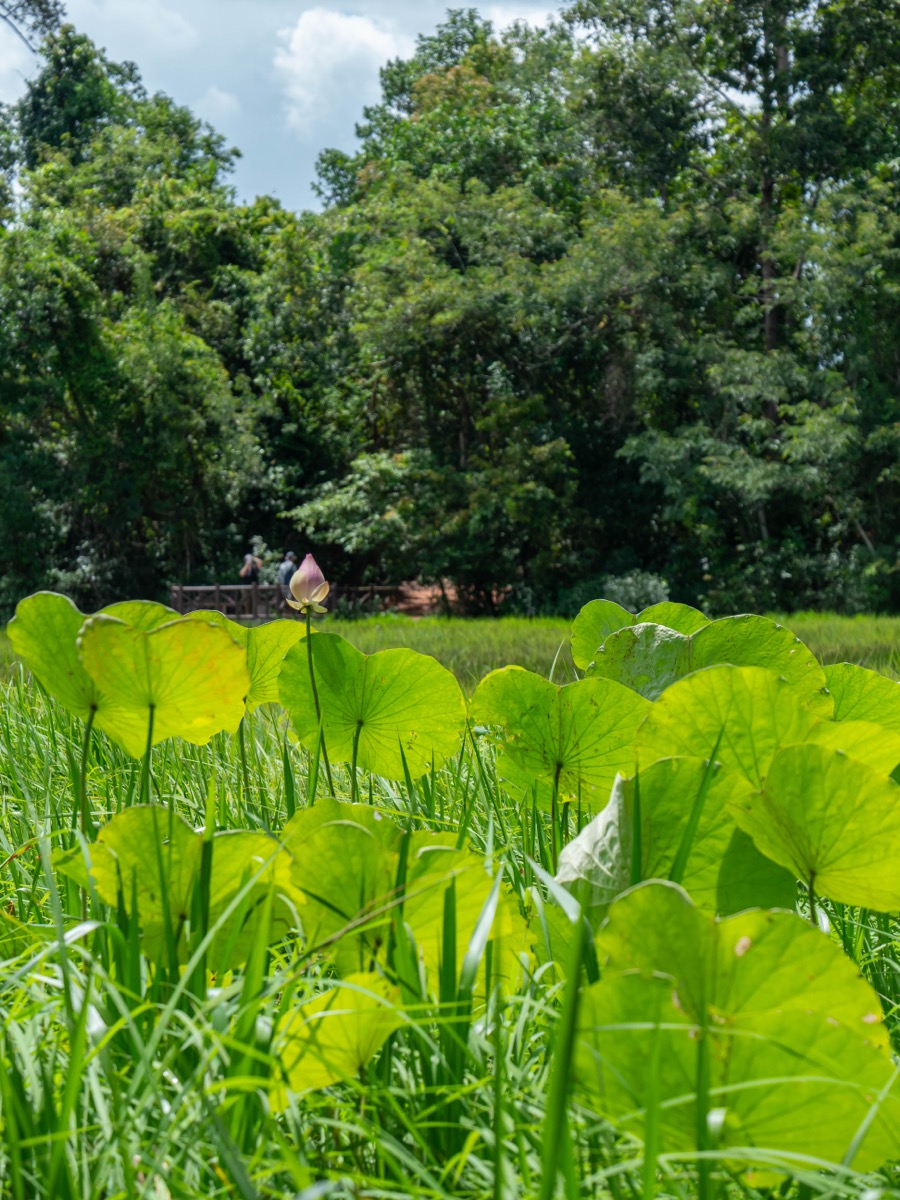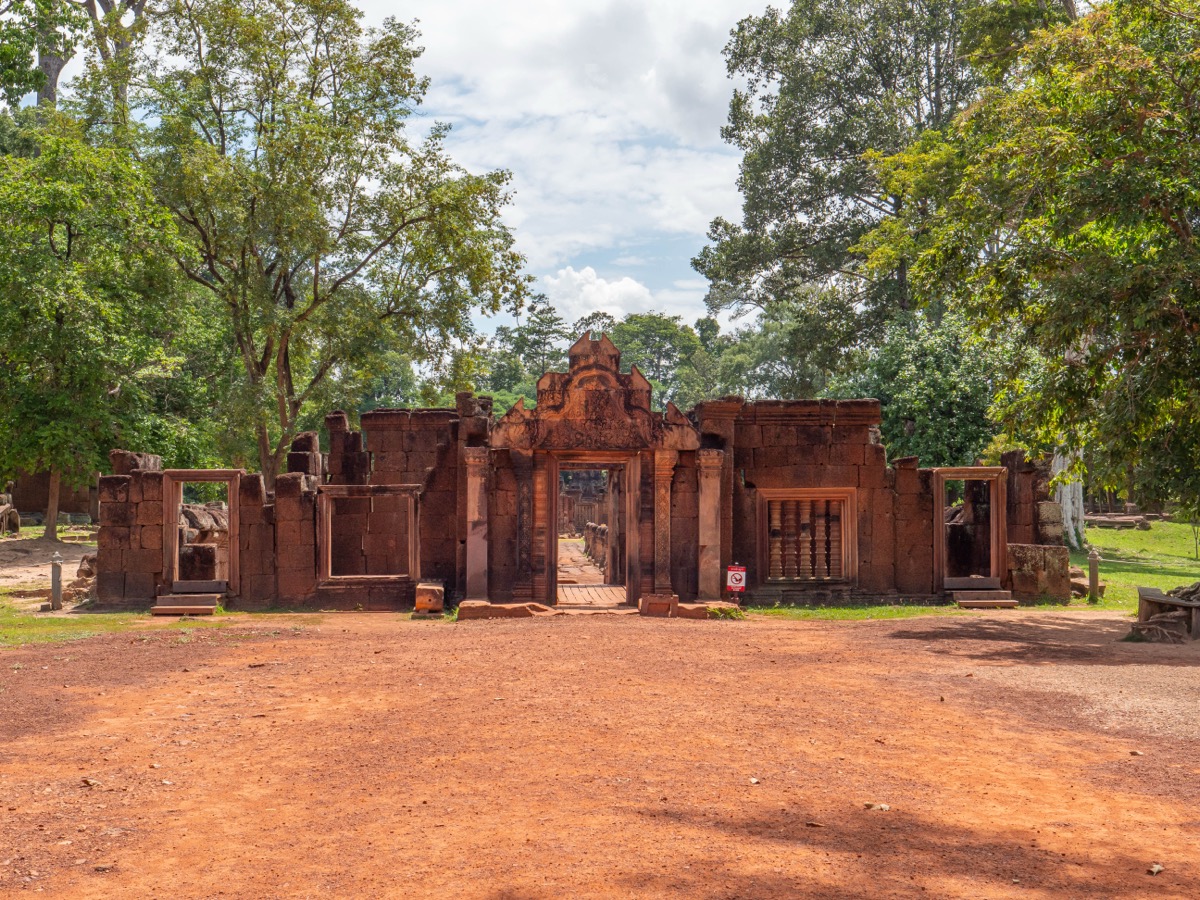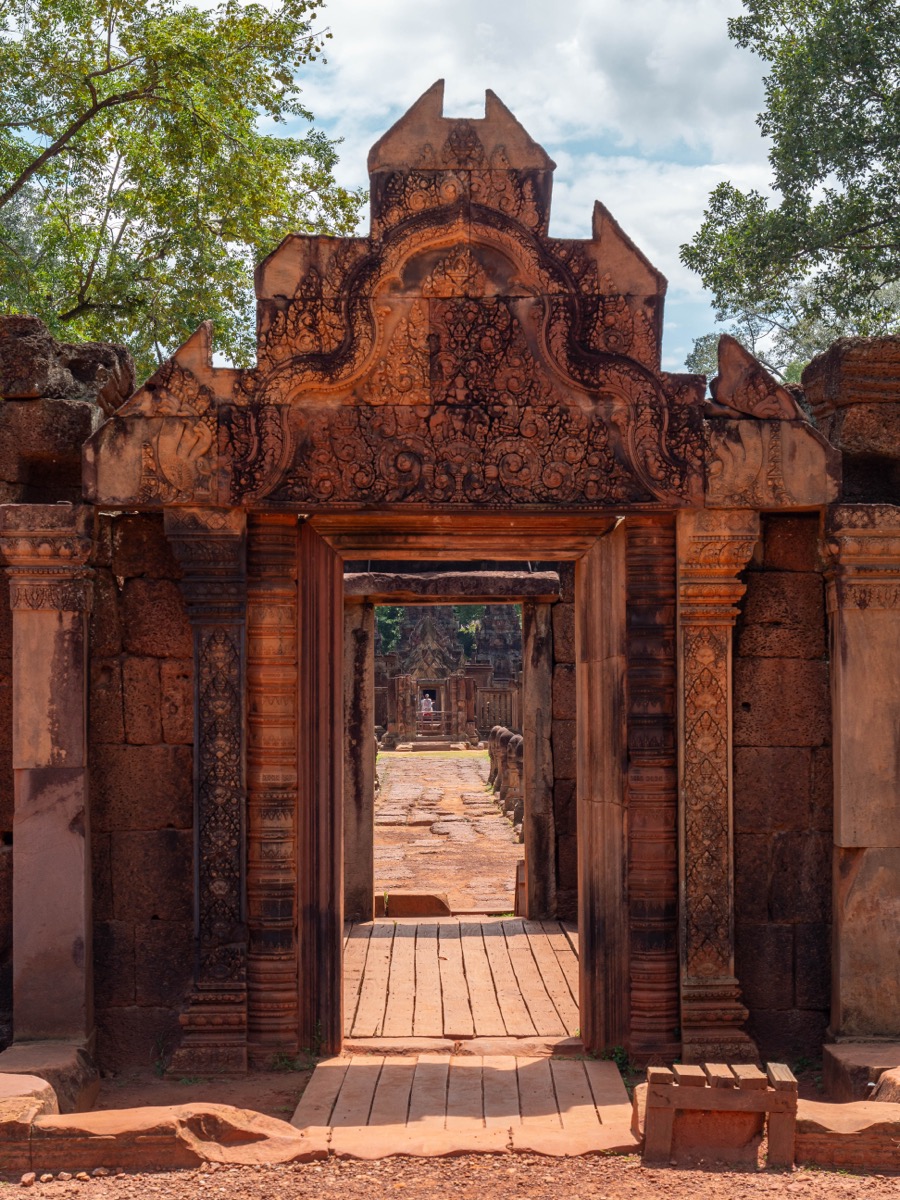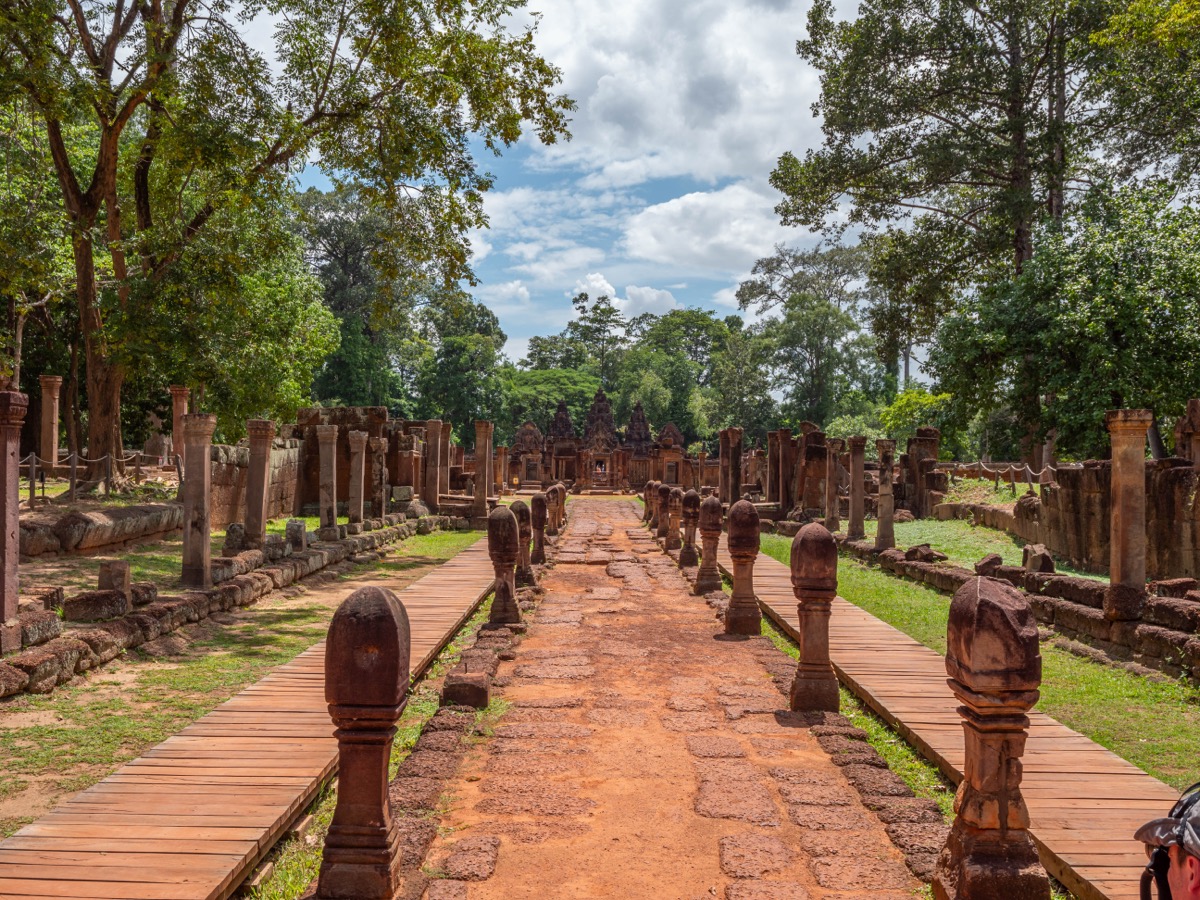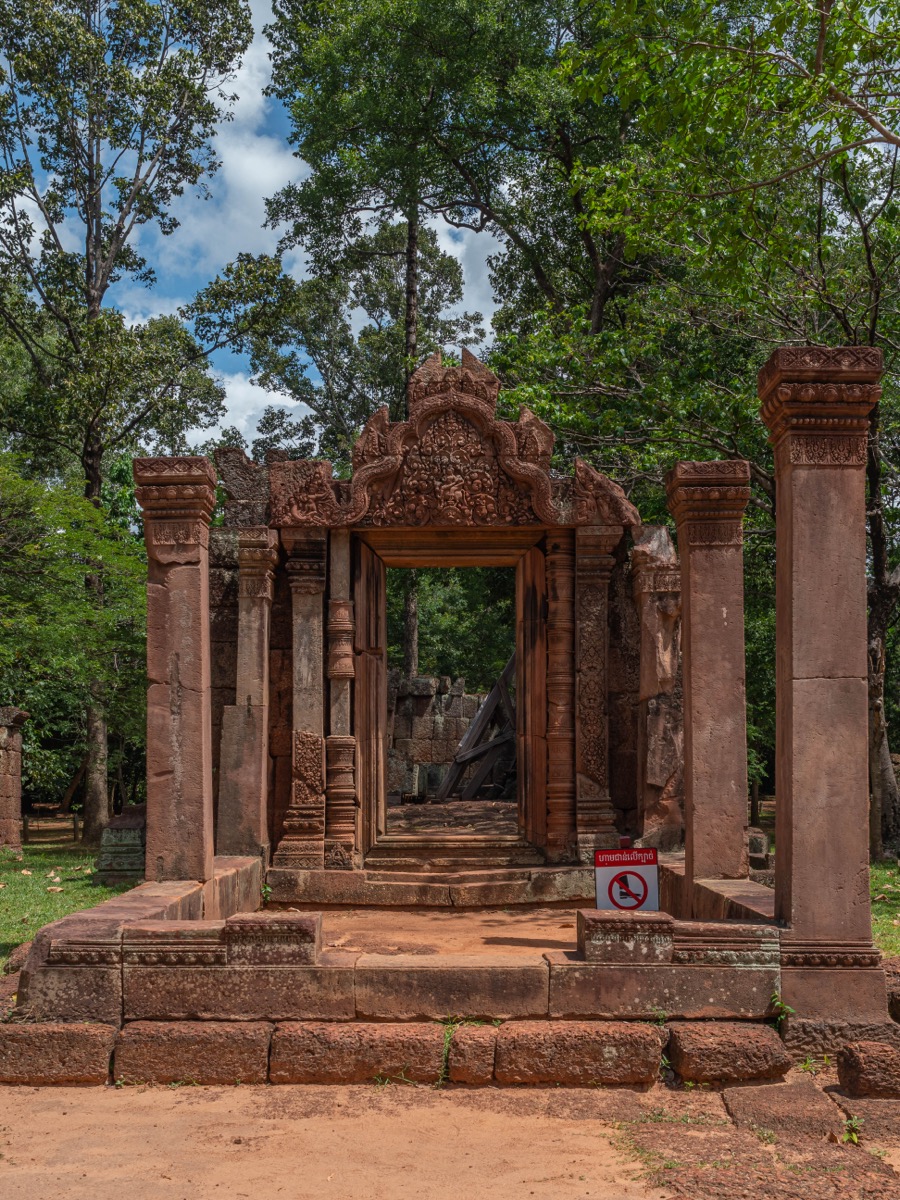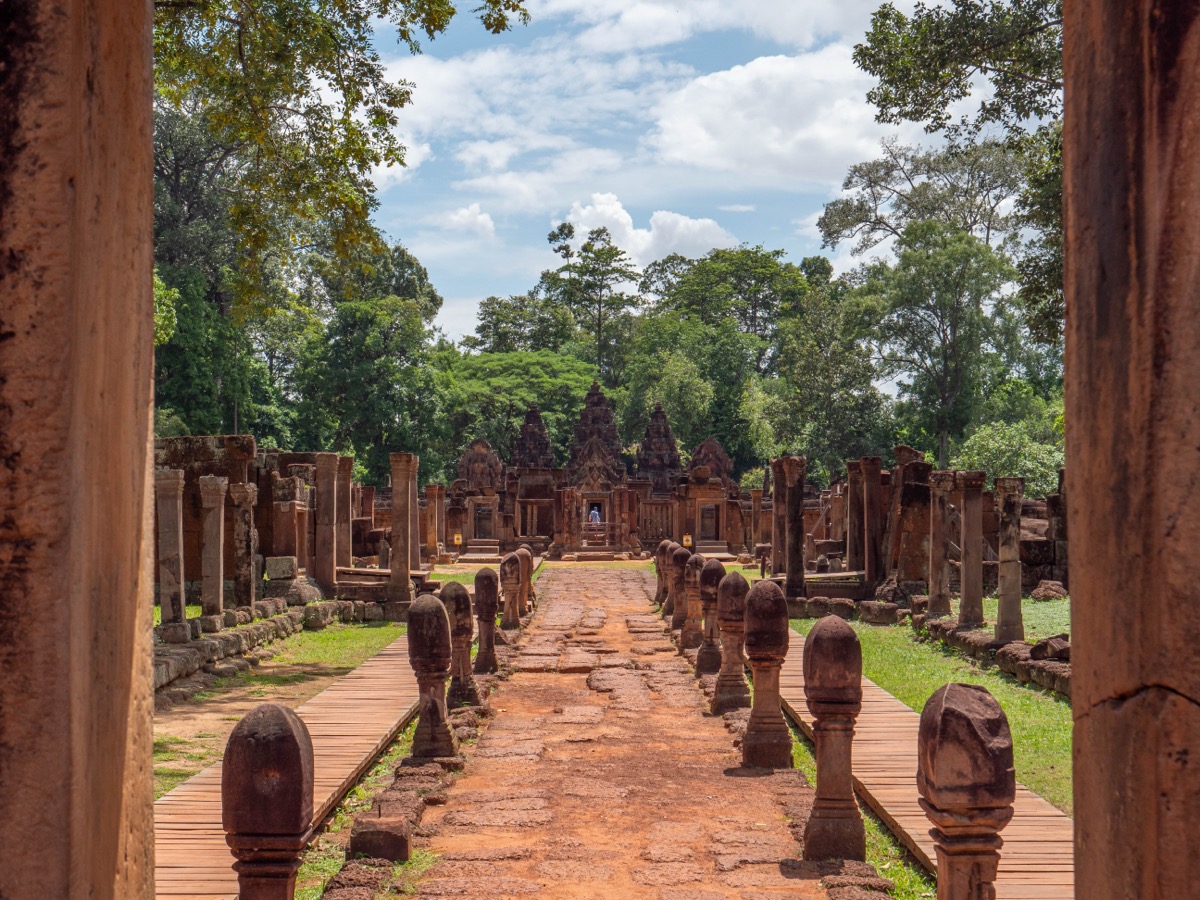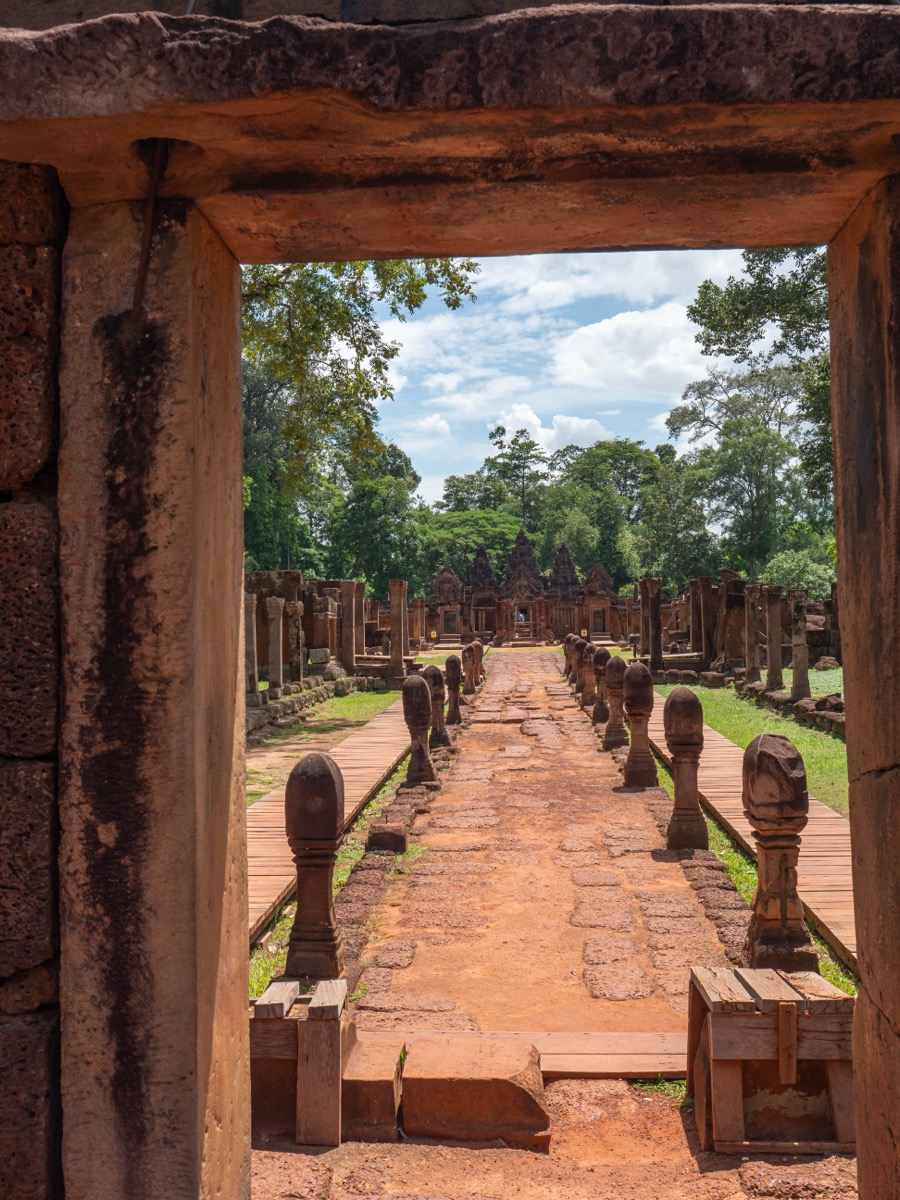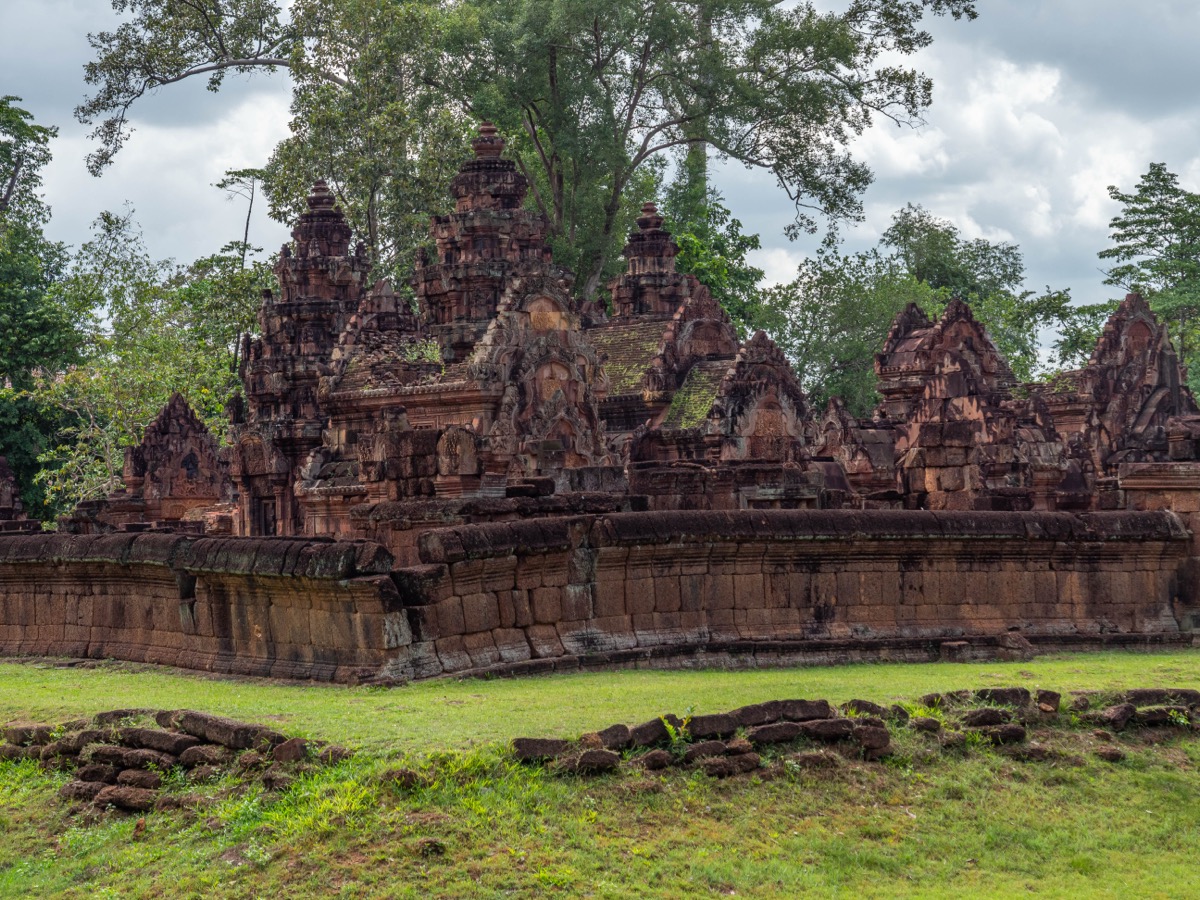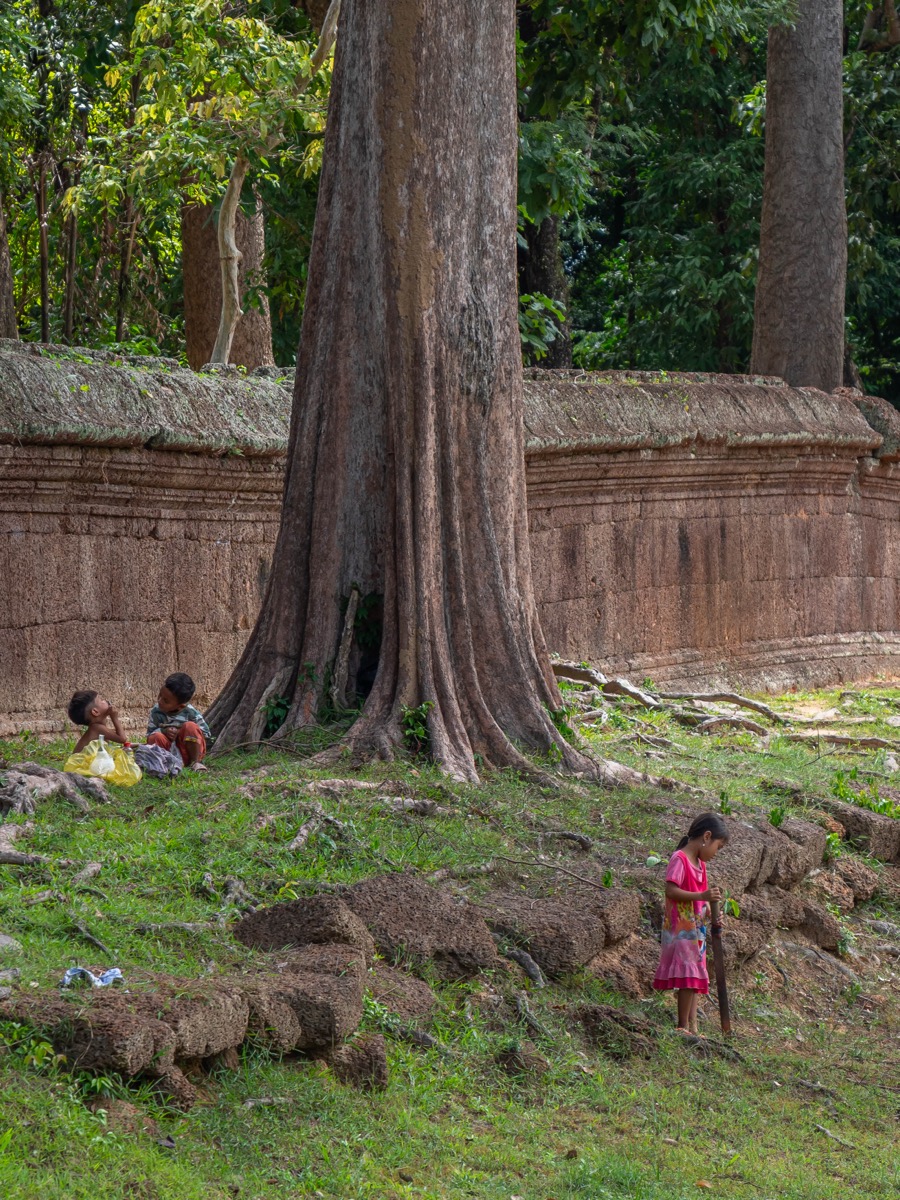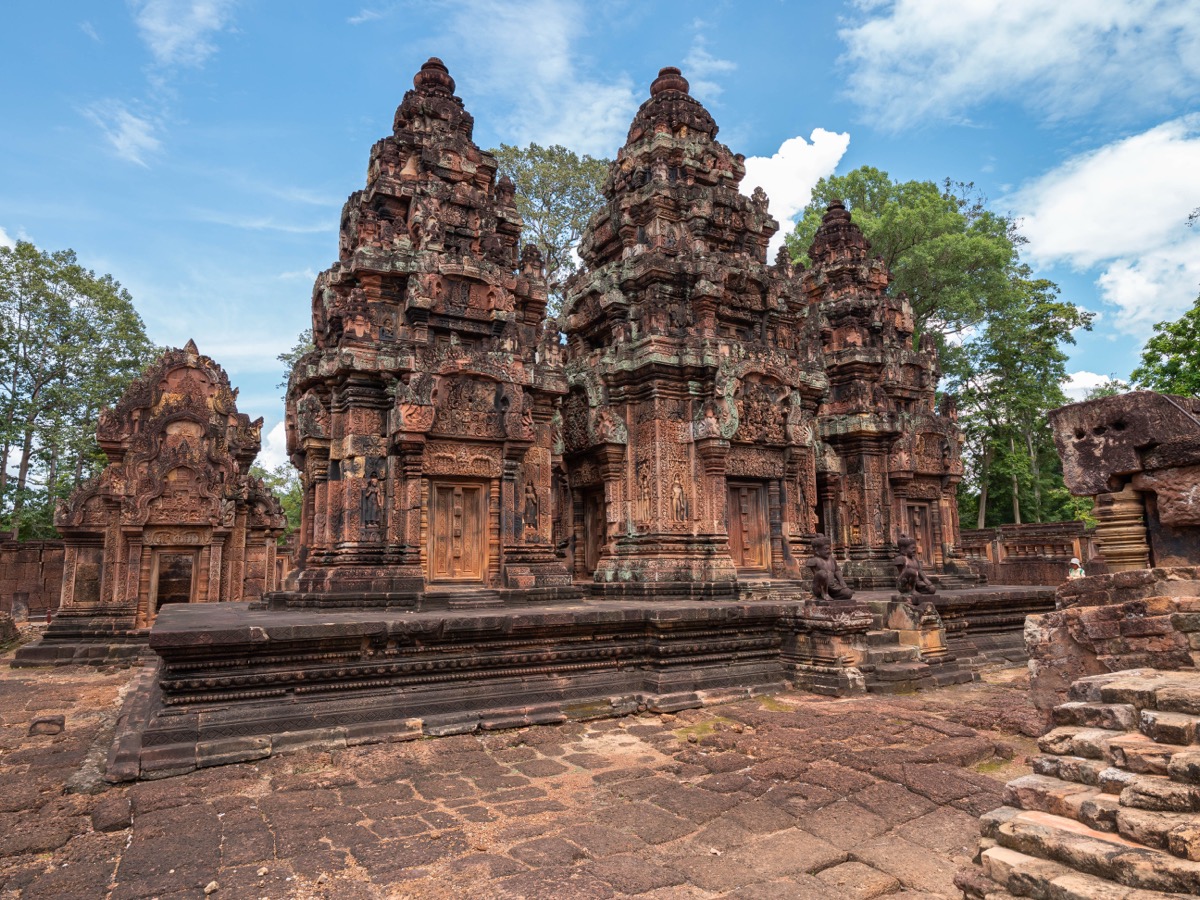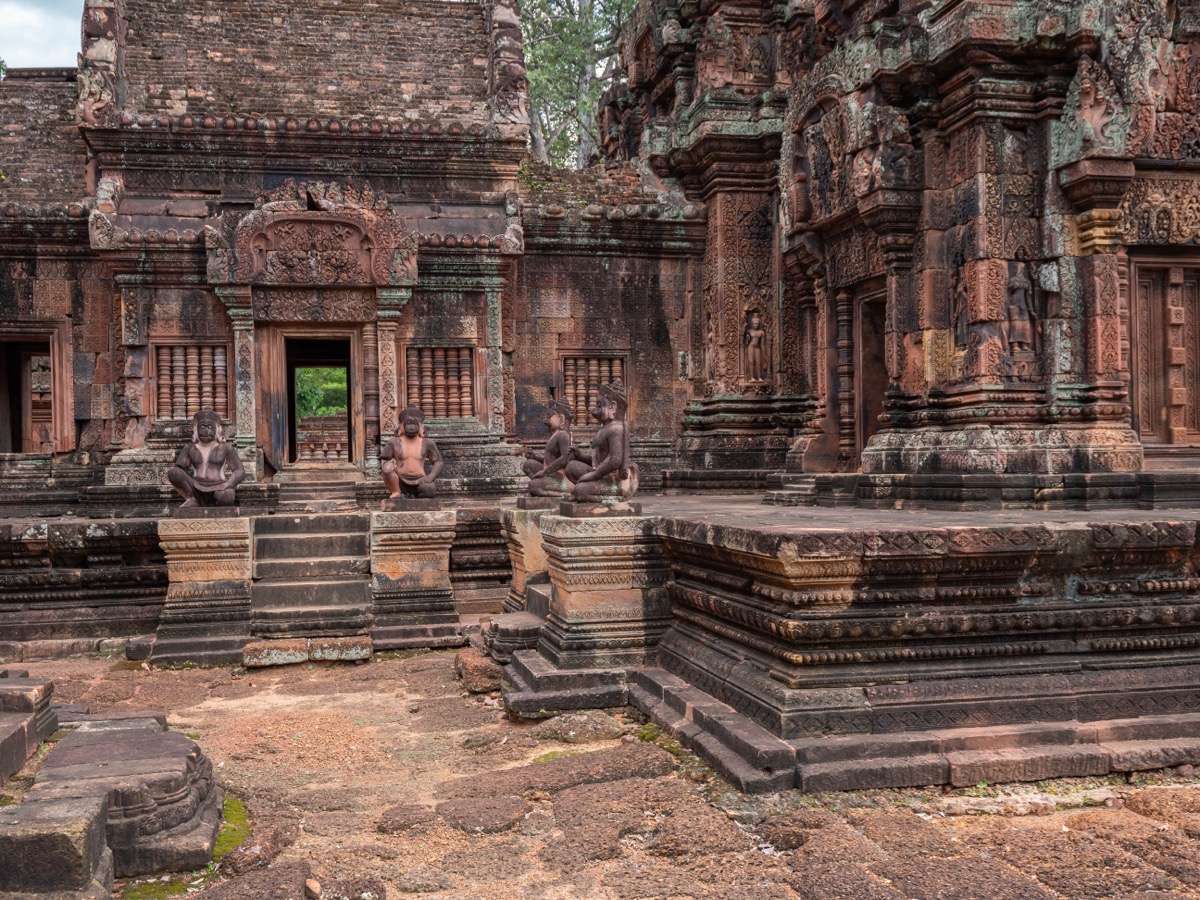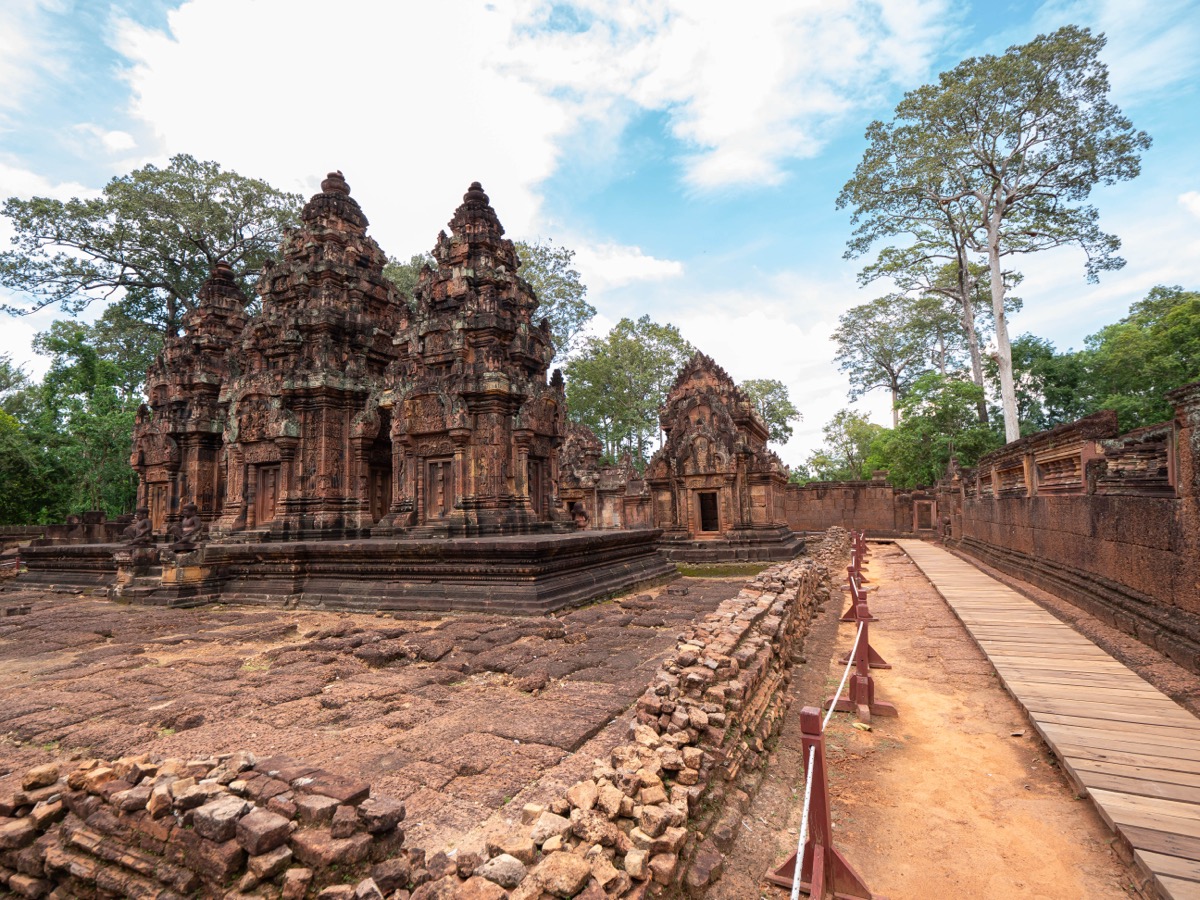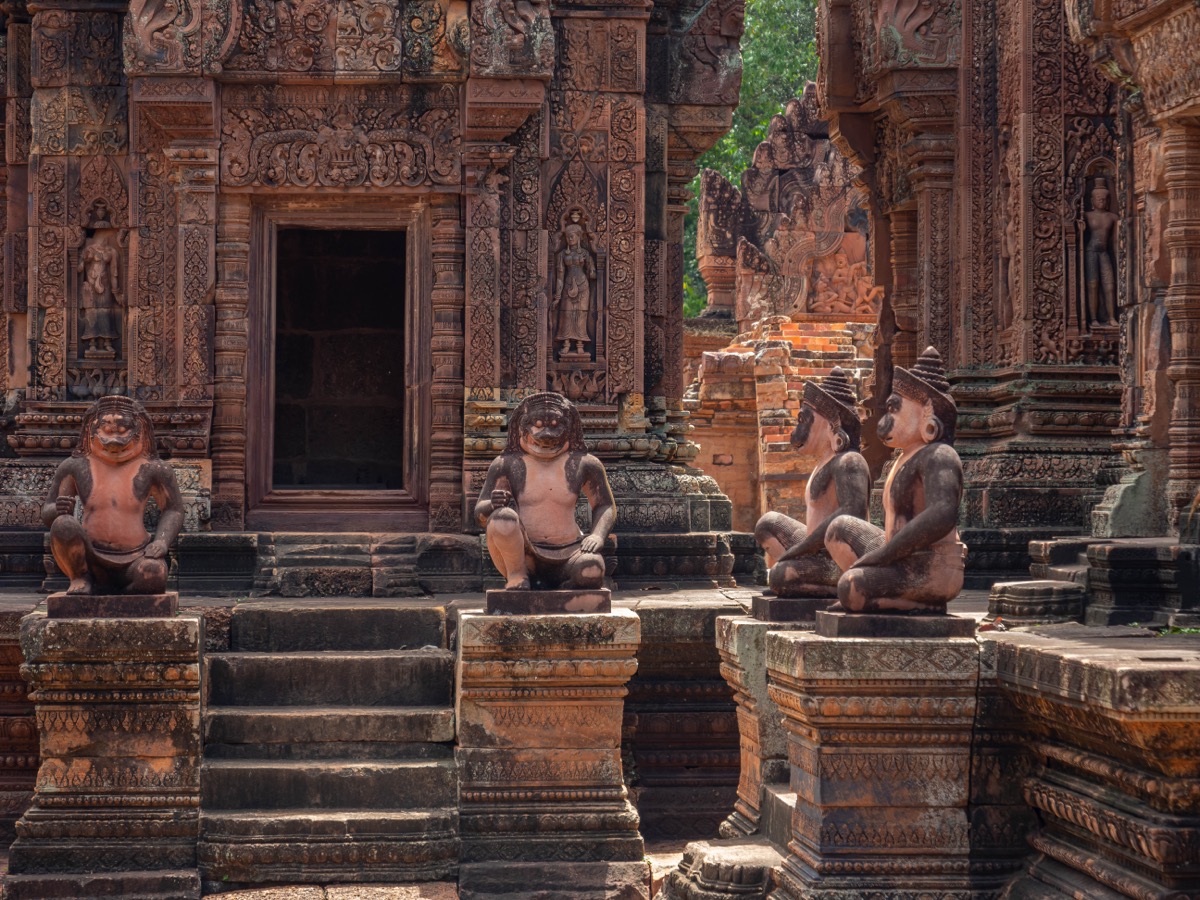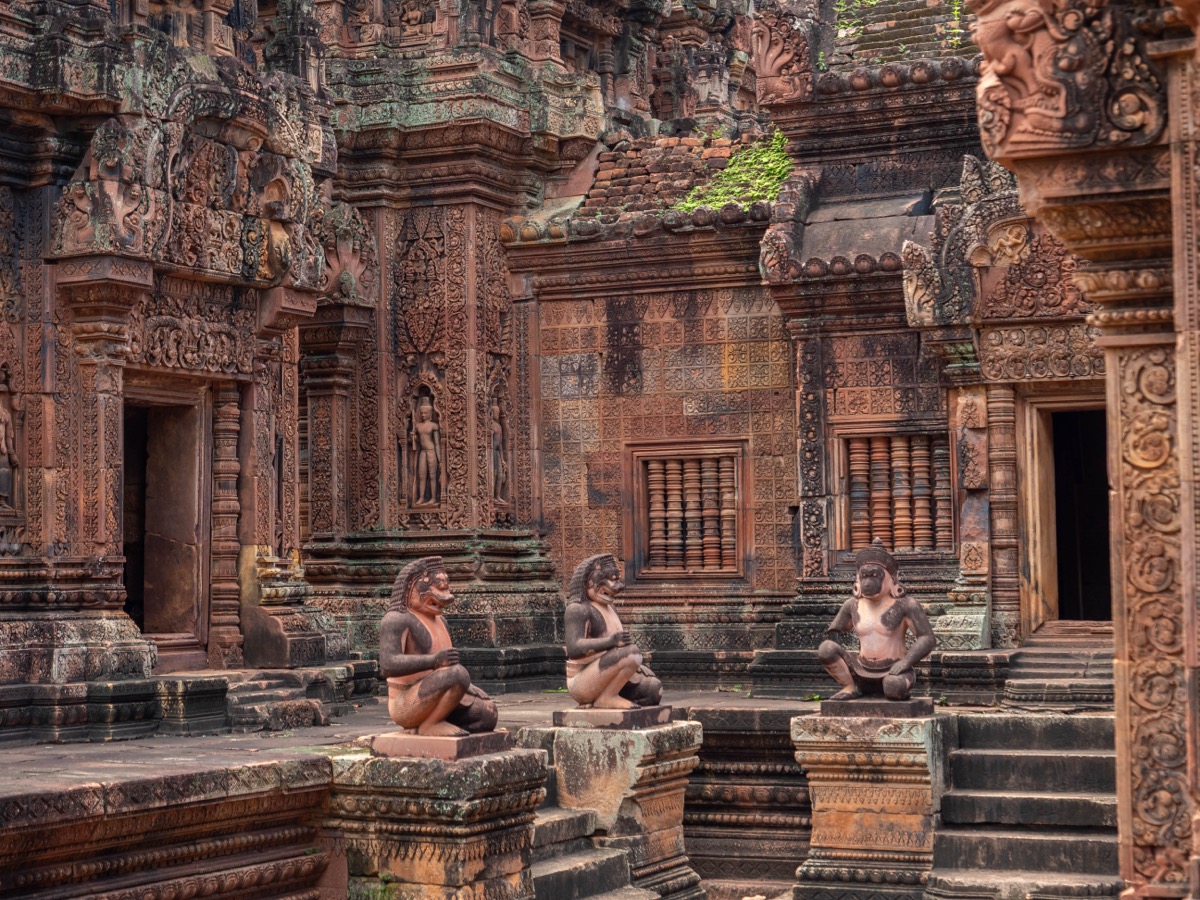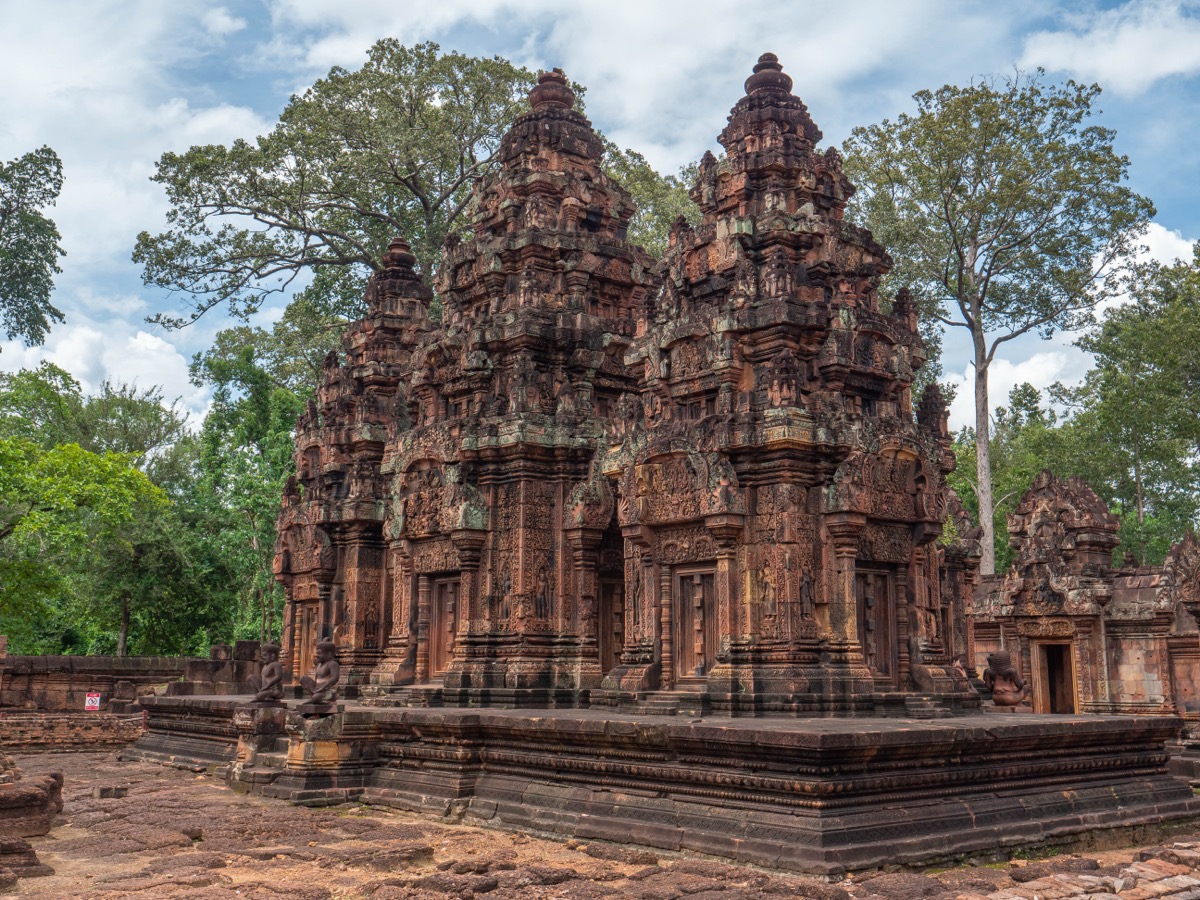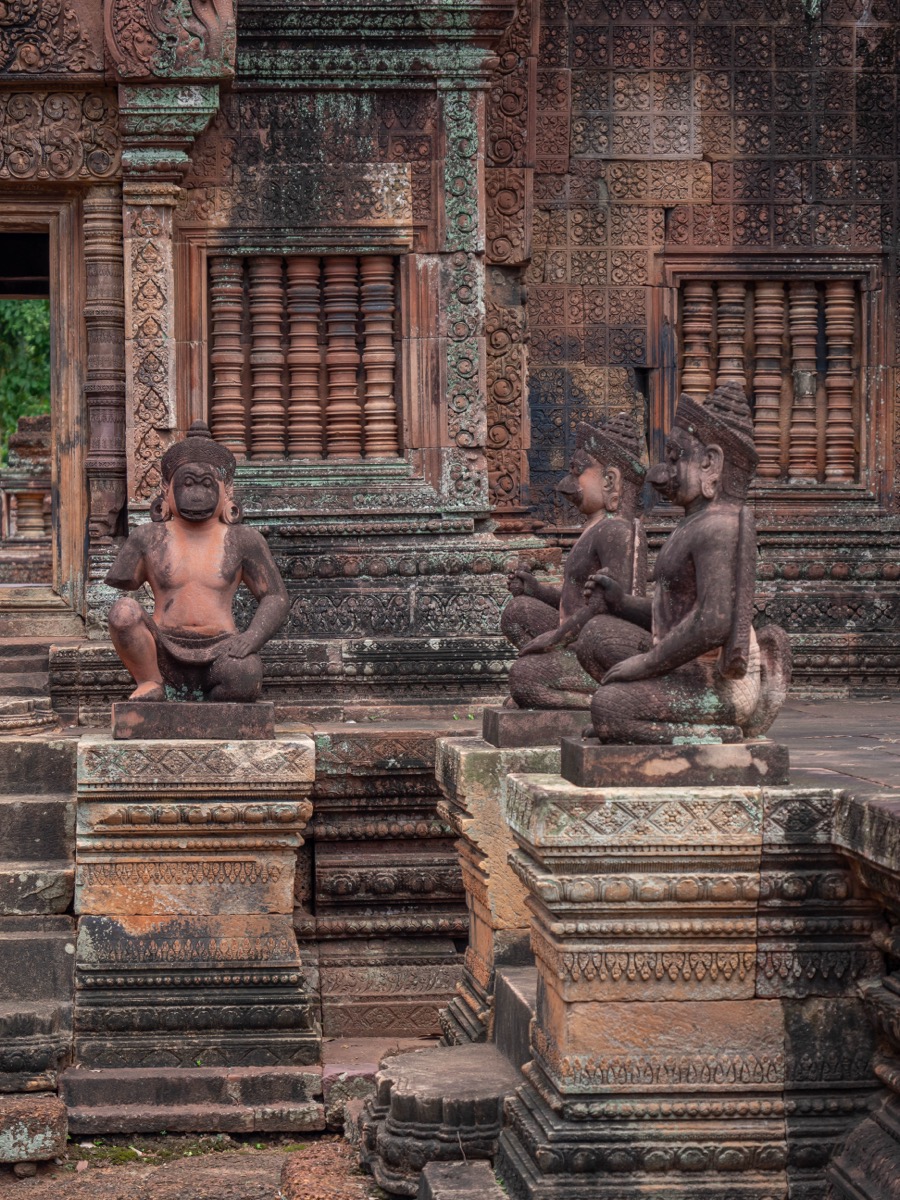Banteay Srei - បន្ទាយស្រី
Banteay Srei, a hidden treasure of Cambodia, is a 10th-century temple dedicated to Shiva, located about 25 km north of Angkor Wat. Despite its modest size, it stands out for its beauty and artistic complexity. Also known as the “Citadel of Women,” Banteay Srei is famous for its exquisite pink sandstone carvings, executed with extraordinary precision and detail.
The temple is a brilliant example of classical Khmer art, showcasing delicate ornamentation and detailed bas-reliefs depicting scenes from Hindu mythology. Its decorated walls feature iconic stories of cosmology and epic tales, bringing to life the legends and daily life of the time.
Despite the centuries since its construction, Banteay Srei continues to captivate visitors from around the world, offering a glimpse into the artistic mastery and spiritual devotion of the ancient Khmer Empire. As a cultural treasure of Cambodia, the site is also listed as a UNESCO World Heritage Site, preserving this unique masterpiece for future generations.
A temple unique in its refinement
Located about 25 km northeast of Angkor Wat, Banteay Srei — literally “The Citadel of Women” — is one of the smallest temples in the Angkor complex, but undoubtedly one of the most artistically valuable.
Built not by a king but by a brahmin, it is dedicated to Shiva, the great Hindu deity, and dates back to the 10th century (around 967 AD).
Distinctive pink sandstone
The temple stands out for its use of pink or reddish sandstone, a softer material than the usual gray sandstone, allowing for extremely detailed carvings. This quality, combined with harmonious proportions, gives the entire complex a delicate and almost miniature appearance.
Dimensions:
- Building height: relatively modest (5 to 6 meters)
- Area: about 100 x 100 meters
- Layout: three concentric enclosures with main structures at the center
Exceptional ornamentation
Banteay Srei is most famous for the richness and finesse of its bas-reliefs:
- Intricate floral and geometric motifs
- Mythological scenes from the Ramayana and Mahabharata
- Battle between Rama and Ravana
- Shiva and Parvati on Mount Kailash
- Elegantly carved female figures (devatas)
The level of detail reaches a sophistication rarely matched in Angkorian art.
A unique origin
Unlike most temples of Angkor, Banteay Srei was not built by a monarch but by Yajnavaraha, a learned brahmin close to King Rajendravarman II, making it a truly exceptional private temple.
This intellectual origin may explain the refined decoration, conceived as a tribute to sacred Hindu texts as much as to art itself.
Rediscovery and restoration
Rediscovered by the French at the end of the 19th century, Banteay Srei was the site of one of the first anastylosis restoration campaigns in the 1930s, led by Henri Marchal.
Today, it is fully integrated into the Angkor park itinerary, though located away from the central monuments.
Visiting tips
- Access: paved road from Siem Reap, accessible by tuk-tuk or minibus.
- Best lighting: morning or late afternoon to bring out the hues of the pink sandstone.
- Time on site: 1 to 2 hours.
- Nearby: typical rural landscapes, rice fields, and traditional villages.
Conclusion
Banteay Srei is a temple apart: small in size, immense in artistic quality. It represents the perfect union of Hindu spirituality and the refinement of Khmer art. Its visit, less crowded than Angkor Wat, offers a quiet and intimate moment of awe.
Lotus pond at the entrance of the site
In Buddhism, the lotus holds a central place as a symbol of purity, elevation, and spiritual awakening. Growing in muddy waters yet blooming as a spotless flower at the surface, it illustrates the path of the practitioner who, despite the world’s suffering and illusions, can attain wisdom and enlightenment. Each lotus color has its own meaning: white for mental purity, blue for wisdom, red for compassion, and pink—often associated with the Buddha himself—symbolizes supreme awakening. The lotus is also frequently depicted in Buddhist iconography, notably as a throne for deities and bodhisattvas, emphasizing their transcendent nature.
